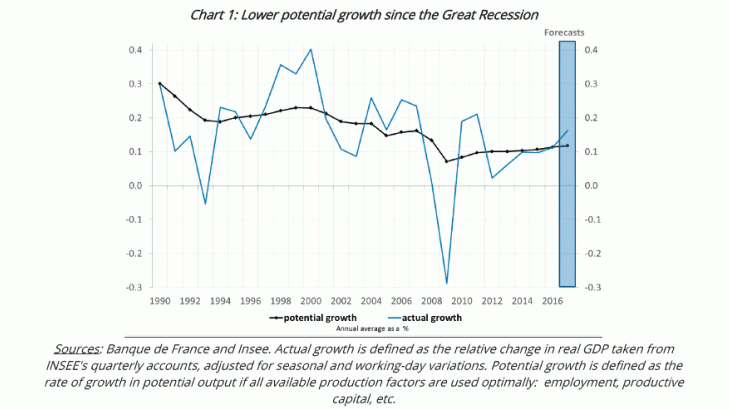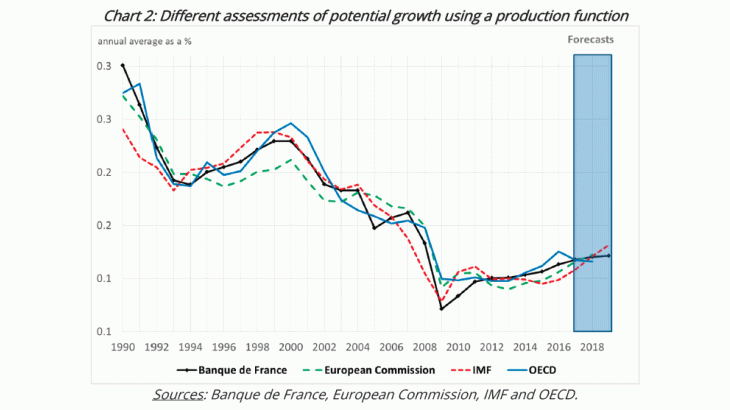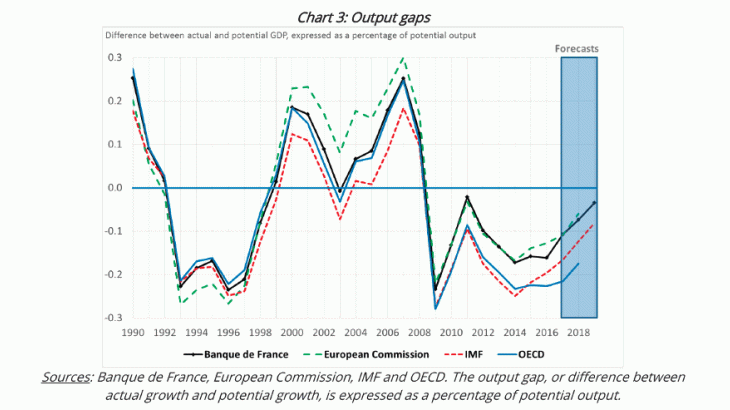Robust, long-term GDP growth is necessary for the sustainability of public debt and welfare financing, in particular pensions and healthcare, and in fine to social cohesion. And yet, French growth has tended to slow since the 1970s. Indeed, GDP growth decelerated from 5.2% as an average annual between 1950 and 1974 to 2.3% between 1974 et 2007 and has been particularly sluggish since the financial crisis (0.6%).
What explains this slowdown and how can we return to stronger growth in the long term? Estimating potential growth provides some answers to this question.
Potential growth, the speed limit of French economic activity
In the long term, actual growth cannot persistently exceed potential growth. If, temporarily, we can increase the production rate, do overtime, etc., the excessive use of available resources will eventually result in inflation, fatigue effects and will cause a slowdown. Potential growth can therefore be seen as a "speed limit" on economic activity.
In order to estimate potential growth, statistical methods such as smoothing or more structural techniques can be used. Structural methods are derived from economic theory. The most widely used method is the production function, which estimates potential GDP using a stock of productive capital (machinery, buildings, intangible assets), a potential employment level and the total factor productivity (TFP), which measures the efficiency of labour and capital utilisation. Each of the methods, even the most statistical, requires numerous assumptions: for statistical methods, the degree of smoothing in particular and, for the production function, aggregating the contribution of each production factor or determining the TFP trend.
This is why assessments can diverge depending on the method and the assumptions used. Chart 2 shows the Banque de France's and international institutions’ potential growth estimates, which sometimes display significant differences, while they all use production functions.


